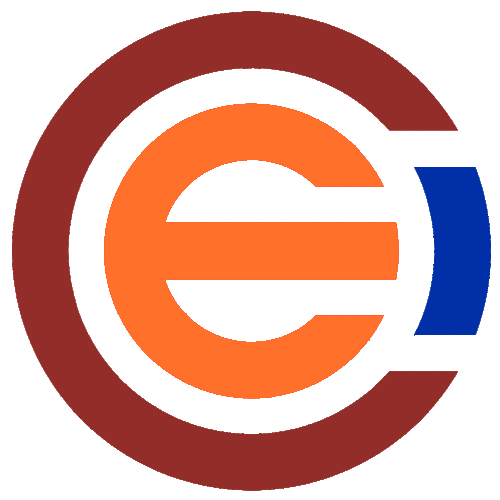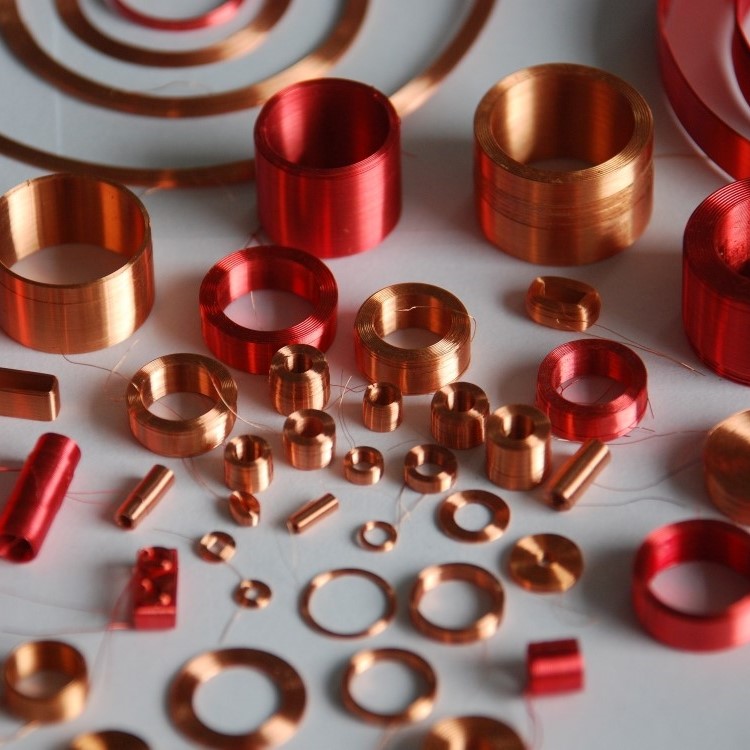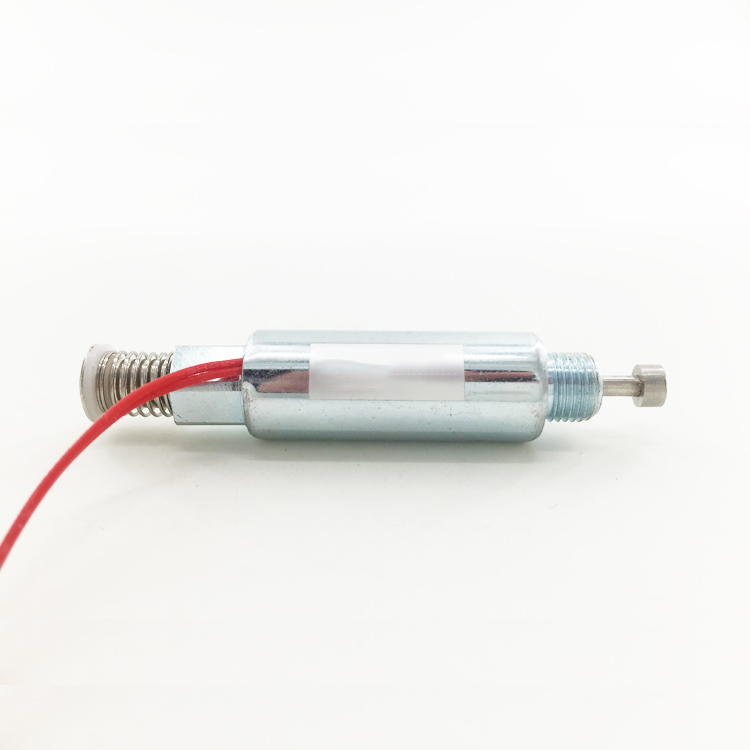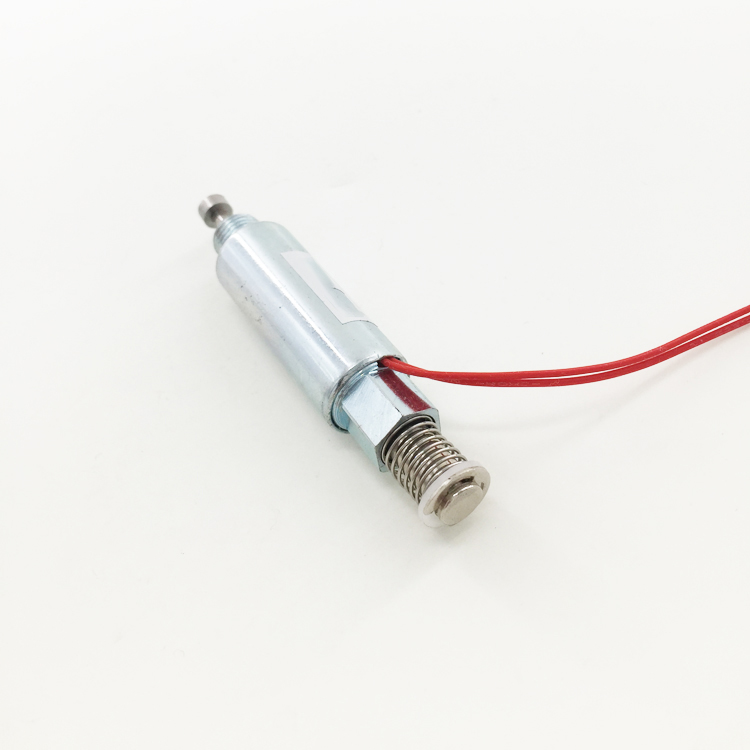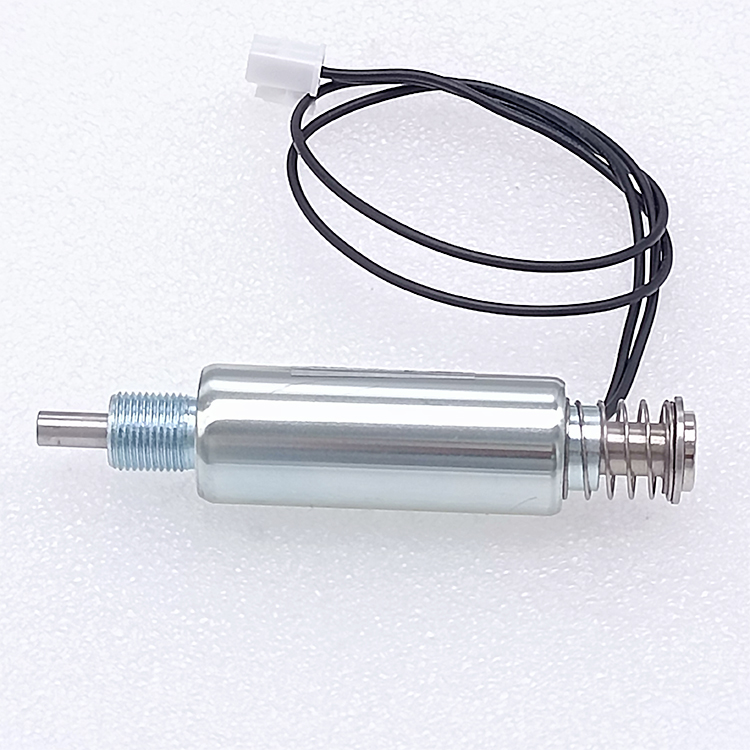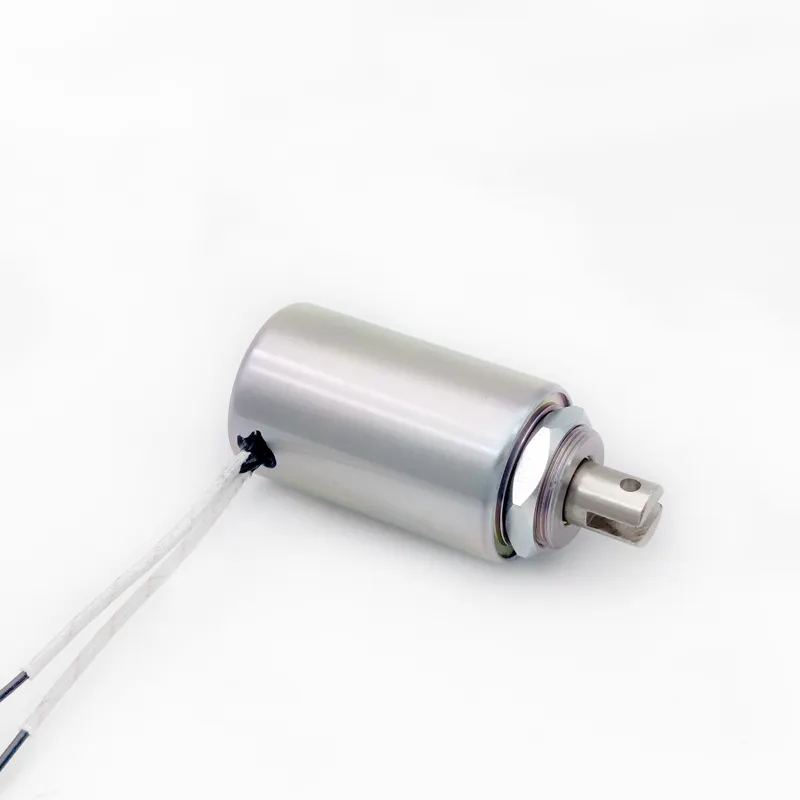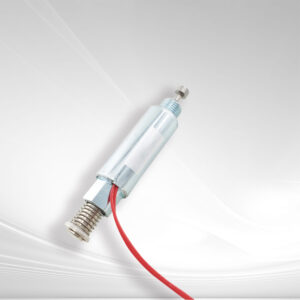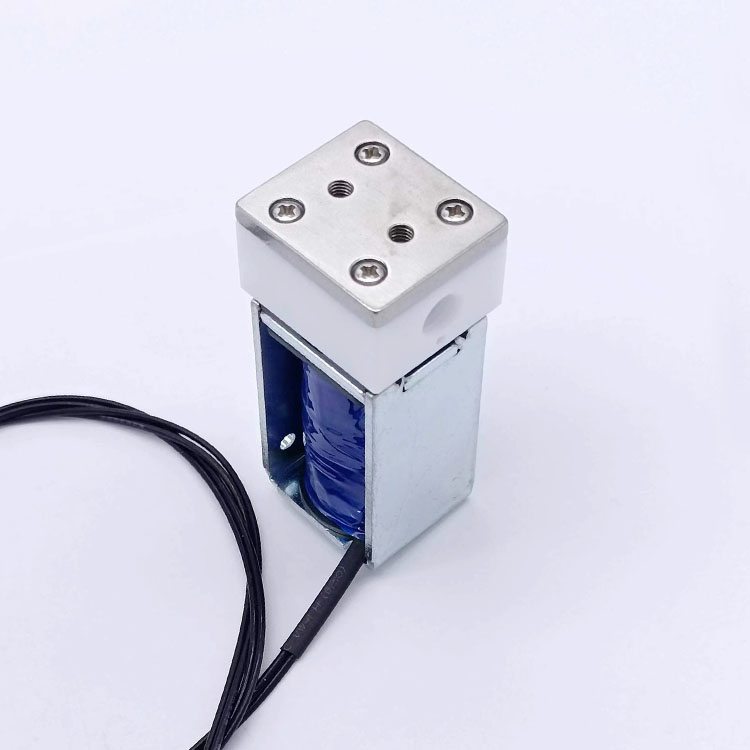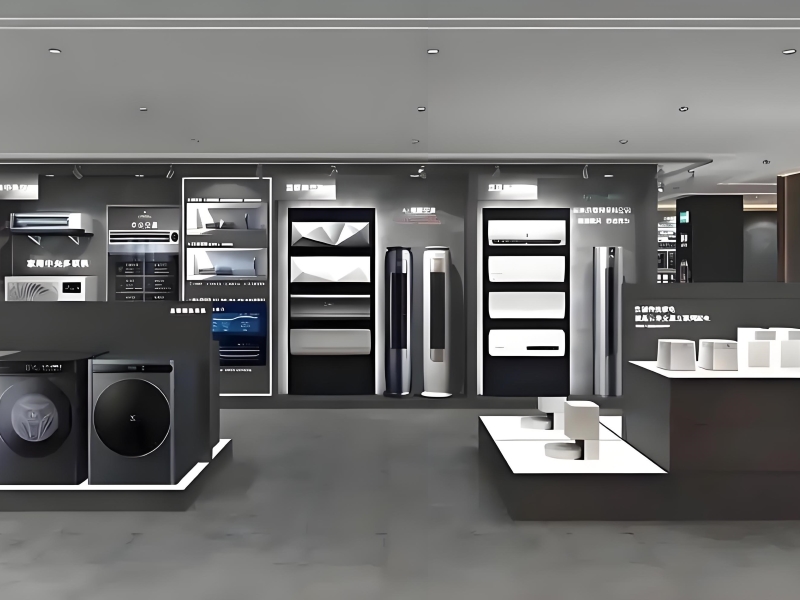Last Updated on 2025-09-04 by SolenoidFactory
In an era of escalating energy costs and environmental regulations, the demand for high-efficiency, low-power electromagnet coils has never been greater. These components are pivotal in applications ranging from industrial automation to consumer electronics, where reducing energy consumption without sacrificing performance is critical. This blog delves into cutting-edge design strategies, materials, and technologies that enable energy-saving electromagnet coils, supported by real-world case studies and actionable insights for engineers and designers.
1. Fundamentals of Low-Power Electromagnet Coil Design
1.1 Core Principles for Energy Efficiency in Electromagnet Coils
The efficiency of an electromagnet coil is determined by its ability to convert electrical energy into magnetic force with minimal losses. Key factors include:
- Ohmic Losses (I²R): Reduced through optimized wire resistance.
- Eddy Current Losses: Mitigated via advanced core materials.
- Hysteresis Losses: Minimized by selecting soft magnetic materials.
Case Study 1:
A HVAC solenoid valve manufacturer cut power consumption by 40% by switching from copper to litz wire, reducing I²R losses at 50 kHz.
1.2 Material Innovations for Low-Power Electromagnet Coils
- High-Conductivity Windings: Oxygen-free copper (OFC) with 101% IACS (International Annealed Copper Standard) conductivity.
- Amorphous and Nanocrystalline Cores: Reduce eddy current losses by up to 90% compared to traditional silicon steel.
- High-Temperature Superconductors (HTS): Emerging materials like REBCO tapes enable zero-resistance coils for ultra-low power systems.
2. Advanced Winding Techniques for Energy-Saving Electromagnet Coils
2.1 Litz Wire and Stranded Configurations
Litz wire, composed of individually insulated thin strands, minimizes skin and proximity effects in high-frequency electromagnet coils:
- Skin Depth Formula: δ = √(ρ/(πfμ)), where lower ρ (resistivity) and f (frequency) reduce losses.
- Application Example: Wireless charging coils achieve 92% efficiency at 6.78 MHz using 500-strand litz wire.
2.2 Orthocyclic Winding Patterns
This precision winding method maximizes packing density (up to 95% fill factor), reducing coil volume and resistance:
- Formula: Number of layers (N) = √(Total Turns × Wire Diameter² / Bobbin Area).
- Case Study 2: A MRI manufacturer reduced cryogenic cooling costs by 25% using orthocyclic-wound HTS coils.
2.3 Planar and PCB-Based Electromagnet Coils
Flat spiral coils etched onto PCBs offer ultra-low profile designs with precise control over inductance (L) and resistance (R):
- Inductance Calculation: L = (μ₀N²d)/(8r) for planar spirals, where d = diameter, r = turn spacing.
- Application: Microscale actuators in MEMS devices consume <10 mW while generating 0.5 Tesla fields.
3. Smart Control Strategies for Low-Power Electromagnet Coils
3.1 Pulse Width Modulation (PWM) Drive Systems
PWM reduces average current while maintaining peak magnetic force:
- Duty Cycle Optimization: A 30% duty cycle at 1 kHz cuts power consumption by 70% vs. DC operation.
- Case Study 3: Elevator brake coils using adaptive PWM reduced standby power from 50W to 5W.
3.2 Dynamic Impedance Matching Networks
Auto-tuning circuits maintain optimal L/R ratios across operating conditions:
- Algorithm: Particle swarm optimization (PSO) adjusts capacitor banks in <100 ms.
- Example: Wireless power transfer systems achieve 85% efficiency over 10–200 mm distance variations.
3.3 Zero-Power Latching Mechanisms
Hybrid designs combine permanent magnets with low-power electromagnet coils for zero-energy hold states:
- Working Principle: Short current pulses (1–10 ms) switch between latched states.
- Application: Spacecraft antenna deployment mechanisms operate for decades on button cell batteries.
4. Thermal Management in Energy-Efficient Electromagnet Coils
4.1 Heat Dissipation Design Principles
- Thermal Resistance Formula: θ = (T_junction – T_ambient)/Power Loss.
- Materials: Thermally conductive epoxies (5–10 W/mK) and aluminum nitride substrates (170 W/mK).
4.2 Active Cooling Integration
- Microchannel Heat Sinks: Reduce hotspot temperatures by 40°C in high-density electromagnet coils.
- Peltier Elements: Provide precise ±0.1°C control for superconducting coil stability.
Case Study 4: Electric vehicle contactors using graphene-enhanced thermal interface materials achieved 50,000 cycles at 150°C.
-
Rated 0 out of 5
-
Rated 0 out of 5
-
Rated 0 out of 5
-
Rated 0 out of 5
5. Case Studies: Low-Power Electromagnet Coils in Action
5.1 Industrial Automation: Smart Factory Solutions
Challenge: A packaging line’s pneumatic valves consumed 2.4 MW annually.
Solution:
- Replaced DC coils with PWM-driven amorphous core electromagnet coils.
- Implemented regenerative braking to recover 15% of actuation energy.
Result: 65% energy reduction, saving $180,000/year.
5.2 Medical Devices: Portable MRI Systems
Challenge: Traditional MRI coils require 25 kW hospital-grade power.
Innovation:
- HTS-based low-power electromagnet coils operating at 77 K with 0.5 W static loss.
- Superconducting quantum interference device (SQUID) sensors for ultra-sensitive detection.
Outcome: 3 Tesla portable MRI units powered by standard 110V outlets.
5.3 Consumer Electronics: Haptic Feedback Actuators
Breakthrough:
- PCB-embedded electromagnet coils (0.5 mm thickness) producing 1N force at 0.1W.
- Resonant frequency tuning via MEMS capacitors.
Impact: Smartphone haptics with 10× longer battery life vs. ERM motors.
6. Future Trends in Low-Power Electromagnet Coil Technology
6.1 Graphene and 2D Material Windings
- Properties: 20% lower resistivity than copper, 500% better thermal conductivity.
- Prototype: MIT’s graphene-laminated coils achieved 0.5Ω resistance at 100 GHz.
6.2 AI-Optimized Electromagnet Coil Design
- Generative Design: Algorithms create fractal-like windings with 30% lower losses.
- Digital Twins: Real-time EM/thermal simulations accelerate prototyping by 90%.
6.3 Bio-Inspired Electromagnet Coils
- Octopus Tentacle Models: Variable stiffness coils adapt shape for optimal flux paths.
- Leaf Venation Patterns: Branching conductor layouts minimize eddy current losses.
7. Design Guidelines for Energy-Saving Electromagnet Coils
7.1 Step 1: Define Operational Parameters
- Force Requirements: F = (B²A)/(2μ₀), where B = flux density, A = pole area.
- Duty Cycle: Calculate RMS current I_rms = I_peak × √(Duty Cycle).
7.2 Step 2: Material Selection
- Conductors: OFC (99.99% Cu) vs. aluminum (61% IACS, 30% lighter).
- Cores: Compare ferrite (μ_r=2000), permalloy (μ_r=100,000), and Metglas (μ_r=1,000,000).
7.3 Step 3: Thermal and EMI Validation
- Simulation Tools: ANSYS Maxwell for EM analysis, COMSOL for multiphysics.
- Testing Protocols: IEC 62368-1 for safety, CISPR 32 for EMI compliance.
Powering the Future with Intelligent Electromagnet Coils
The quest for high-efficiency, low-power electromagnet coils is driving remarkable innovations in materials, control systems, and manufacturing. By embracing these technologies, industries can achieve unprecedented energy savings while meeting stringent performance demands. As pioneers in electromagnetic solutions, we’re committed to delivering coils that don’t just meet specifications—they redefine what’s possible.
About SF electromagnets factory
Shengfeng Electromagnet Co., Ltd. was established in 2015 and is located in the Xiansha Industrial Park with beautiful scenery and convenient transportation. The company covers an area of 16000 square meters and has modern production plants, advanced production equipment and a high-quality technical team. Since its establishment, we have always adhered to the corporate philosophy of “innovation, quality, and service”, focusing on the research and development and production of electromagnets, constantly promoting product upgrades and technological progress, and providing customers with the best quality products and services.
Why choose SF electromagnet
HIGH END QUALITY:As the best solenoid electromagnet manufacturer in china, our QC team will ensure every single product you receive are best quality. We have professional quality testing machine.
PRODUCT DESIGN:Our sampling department has complete process of making drawings into reality. We also improve your product design based on our years of working experience.Tell us what you think.
STABLE DELIVERY TIME:As the best electromagnet manufacturer & supplier,we have sufficient manufacturing capacity, big orders won’t beat us, we can still deliver the order for you in time.
BEST PRICE:We are source factory of electromagnet and the best solenoid manufacturer in China, that’s why we can provide high quality bags with best price.
PRECISE MANAGEMENT:Nothing can be achieved if we don’t implement precise management. We are a company with complete management system.
7-24 SERVICE:As the best solenoid manufacturer, 24-7 immediate response: We’ll receive your feedback to make us a better supplier. Contact WhatsApp +86 18902611680
FAQs of electromagnet
We are a Chinese top electromagnet manufacturer and our factory is located in Dongguan. Welcome to visit our factory!
We pecialize in the design and production of high quality electromagnet,solenoid valve,such as rotary solenoid, bistable solenoids, latching solenoids, open frame solenoids, tubular solenoids, self-holding solenoid
•Of course, usually we will provide free samples, and you only need to cover the freight. For custom electromagnet samples, pls send your requirements to us for checking the sample cost.
• It takes about 7 days for sample production.
Yes, we provide free design services, structural design and simple graphic design.
Sure. We can do any electromagnet with your design. Now we open a ODM solenoid which is for small quantity from 100pc to 500pc,but you can still have your own logo.
Depending on the order quantity and production details, it will take about 15 to 20 days.
Always a pre-production sample before mass production; Always final Inspection before shipment
• Power,usage,size, material, quantity, shipping destination, etc.
• You can also just tell us your requirements and we will recommend products to you.
• By sea, by air or by express.
• If you have your own freight forwarder in China, it is the ex-factory or FOB price.
•CFR or CIF, etc., if you need us to ship on your behalf.
• DDP and DDU can also be used.
• More choices, we will consider your choices.
• The price is determined by the quantity, material, processing method, size and other factors. In addition, due to our continuous
technological innovation, the prices of some of our products are extremely competitive, please contact us to quote.
